Tiles are the most hygienic and easily maintained wall and floor surfaces you can choose.
Keep your tiles looking their best with our expert cleaning advice and trusted product recommendations. Whether your tiles are new or have been in place for years, the right care will ensure they stay fresh for many, many years.
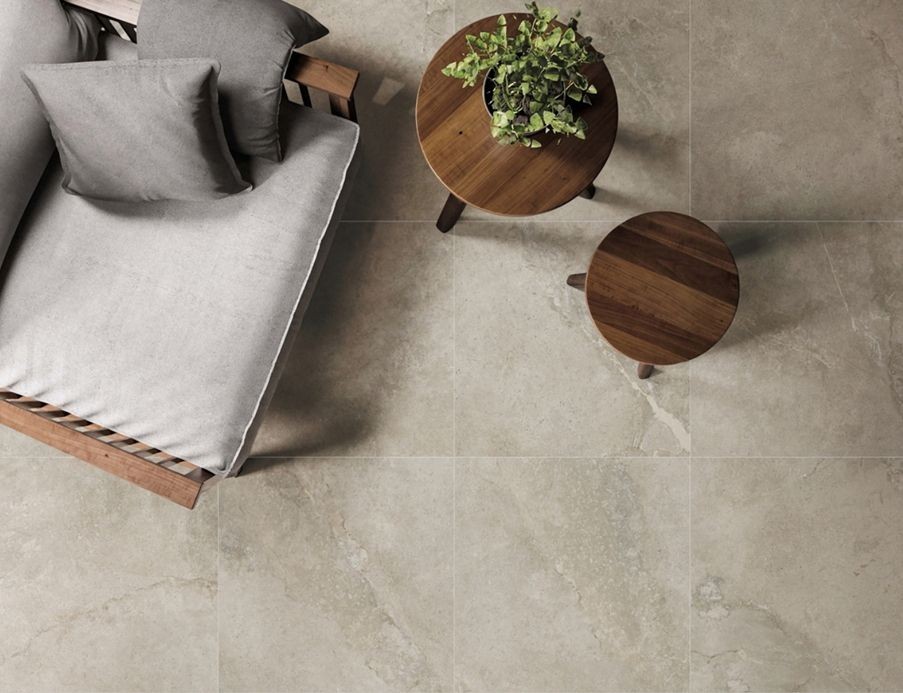
Post-Installation Cleaning
After your tiles are laid, an initial clean is essential:
- Remove Grout Haze: Use a low pH stripper like Aqua Mix Grout Haze Clean-Up to eliminate cement-based residues.
- Polished Porcelain Tiles: These often come with a factory-applied protective wax. Remove it with a high pH cleaner such as Aqua Mix Heavy Duty Tile & Grout Cleaner.
- Seal Your Grout: A quick application of penetrating grout sealer makes ongoing maintenance easier and protects cementitious grouts against stains for years.
Routine Tile Cleaning
Generally, keep it simple:
- Vacuum or Sweep First - Remove dirt and grit before mopping to prevent scratches—yes, tiles can scratch!
- Microfibre is a game changer - Use a damp microfiber mop (not soaking wet) with warm water. Avoid flooding the floor to prevent pushing dirt into the grout.
- Use the Right Cleaner - We recommend Aqua Mix Concentrated Stone & Tile Cleaner – a pH-neutral, non-toxic formula that’s tough on stains but gentle enough for everyday use.
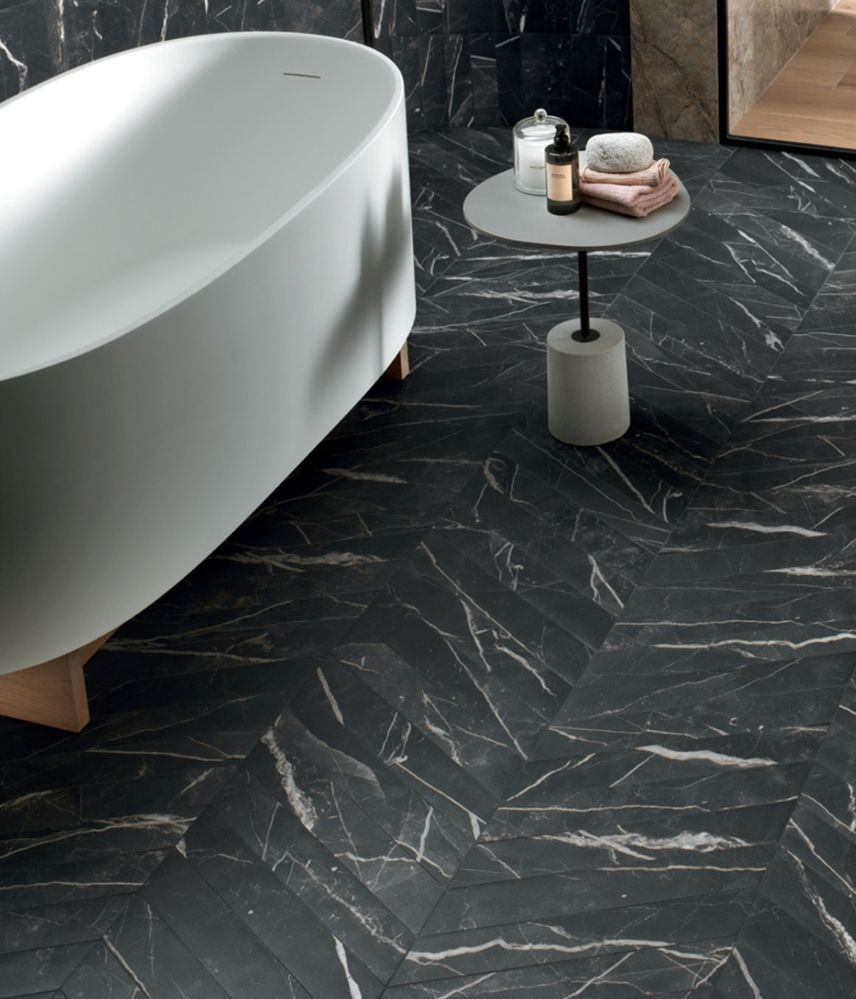

General Tile Cleaning Tips
- Stick with pH-neutral cleaners for regular maintenance. We generally can't go past Aqua Mix Concentrated Stone & Tile Cleaner.
- For stubborn stains or grease, use a higher-alkaline cleaner like Aqua Mix Heavy Duty Tile & Grout Cleaner.
- Avoid acidic cleaners (especially on natural stone), as well as wax or polish-based products that can attract dirt over time.
- Always rinse thoroughly with clean water to remove any cleaner residue.
Grout Haze - the most common issue!
Grout haze is one of the most common post-installation issues in the tile industry. It leaves a cloudy film over your porcelain tiles that can make them appear dull or dirty. Many customers mistake this for poor-quality tiles or think the tile is trapping dirt — but it's usually a residue left behind from the grouting process.
If left too long, grout haze becomes much more difficult to remove. It also tends to attract dirt and grime, making your freshly tiled surface look perpetually unclean.
To remove it, start by wiping the area with a damp microfiber cloth. We highly recommend Aquamix Grout Haze remover, but there are many alternative products available. Gently scrub with a soft-bristle brush or non-abrasive pad, then rinse thoroughly with clean water. Ensure your water is changed regularly to avoid reapplying the haze to the surface through dirty water.
Addressing grout haze early is the key to keeping your porcelain tiles looking crisp and clean from the start.
Cleaning Microtec In/out Tiles
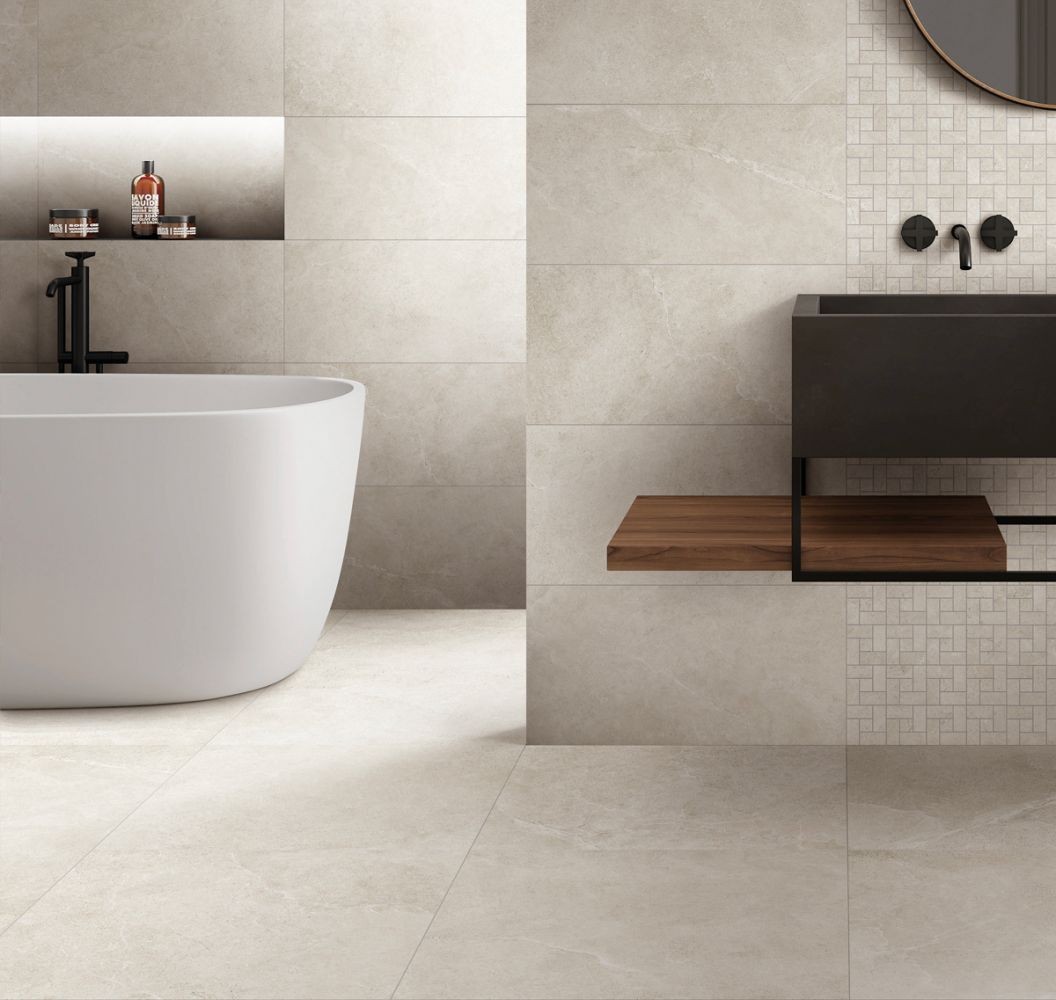
Microtec IN/OUT tiles offer seamless transitions and are simple to maintain.
Whilst they have a smooth surface and avoid the traditional sand paper grit like surface of traditional antislip tiles – they do microscopically provide a ‘rough’ surface where dirt can build up without regular care. It is important to consider the location, expected foot traffic and colour of the product when selecting Microtec IN/OUT tiles.
Your tiler should also be made aware of the product they are handling and the importance of a good grout clean up upon completion.
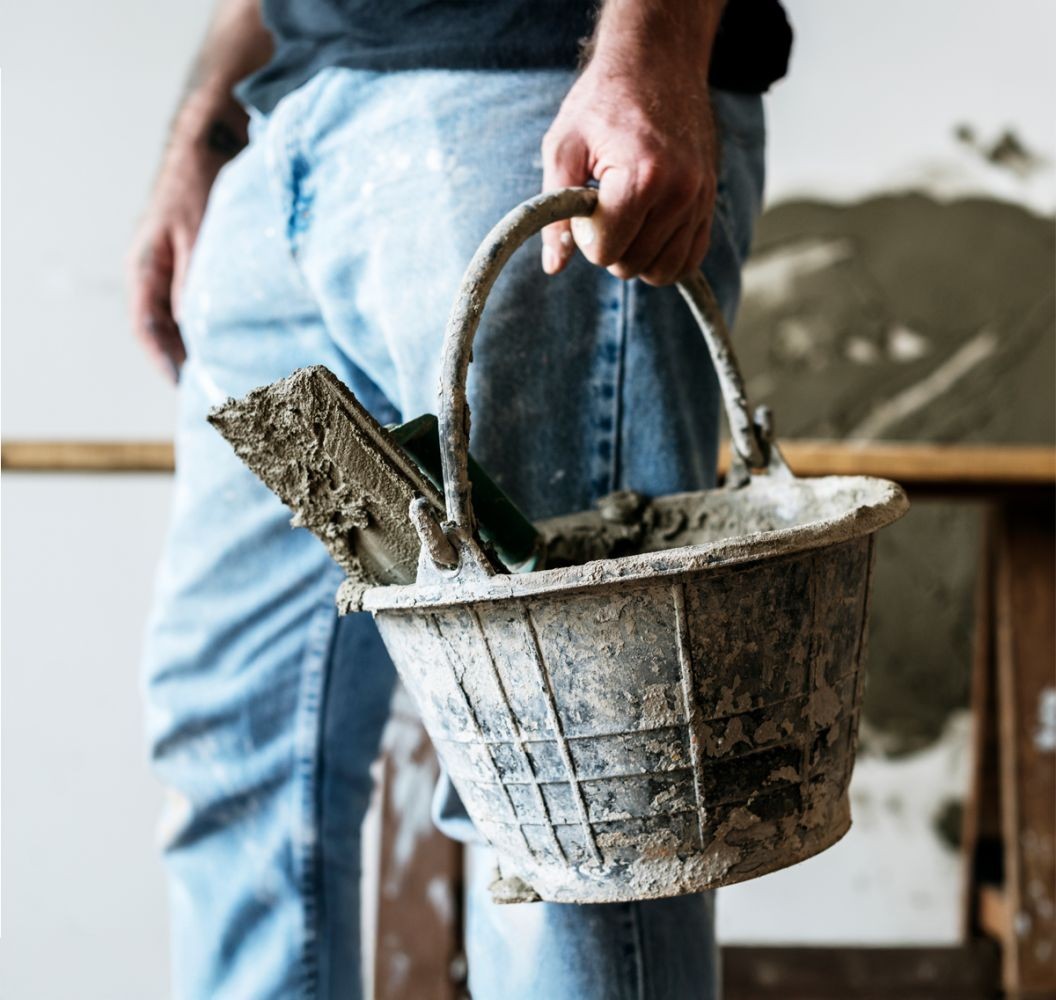
- It is important to start wiping off excessive grout approximately 15 minutes after application or when grout begins to harden.
- A water change should be conducted every 4m2. This helps to remove the polymer from grouting, which causes dirt and debris sticking to the tile surface.
- A microfibre cloth is recommended to be used to buff-off grout residue after the surface becomes dry.
- Aquamix grout haze cleaner is recommended to be used if there is still grout haze or other stubborn marks after the above process.
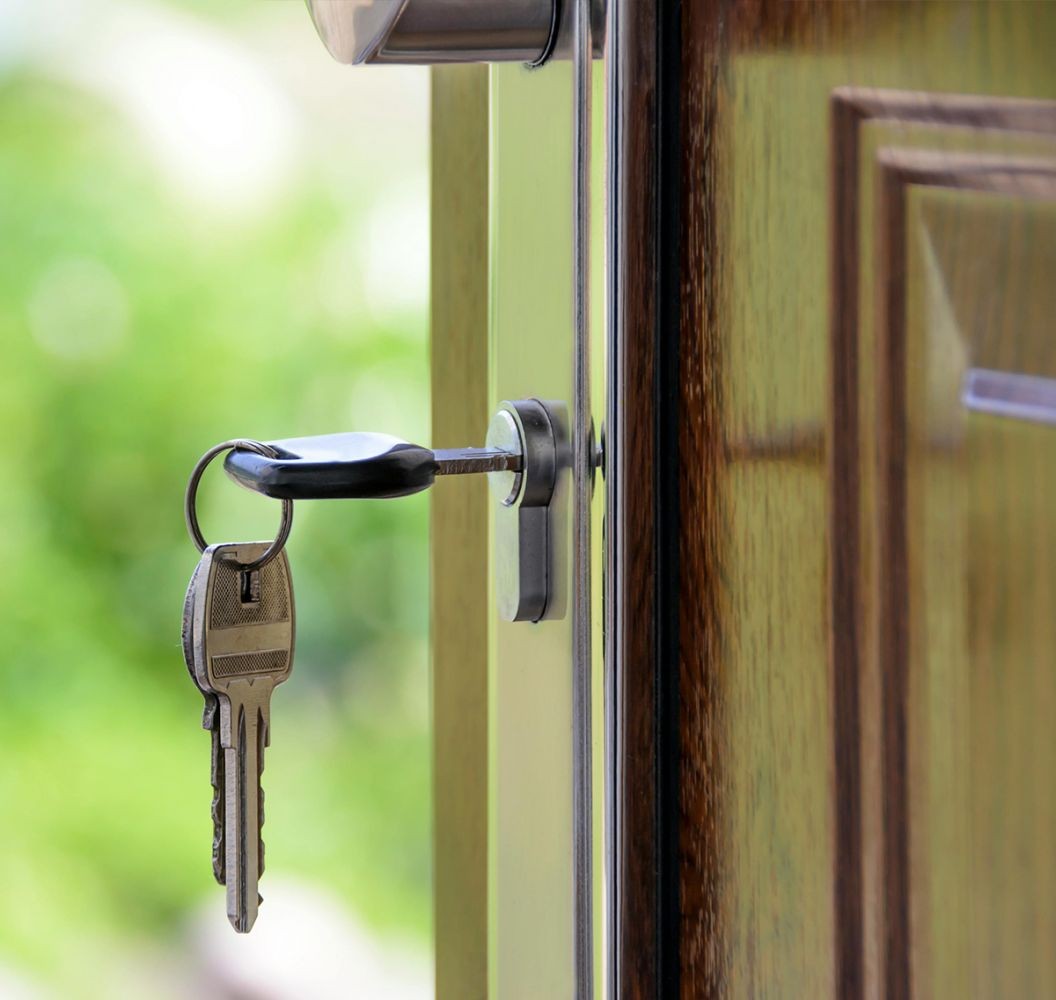
Ongoing maintenance we recommend microfibre products such as Bona mops and a pH-neutral cleaner such as Aquamix Concentrated Stone & Tile Cleaner .
For excessive dirt build up use Lithofin Intensive Cleaner.
Cleaning Outdoor Tiles
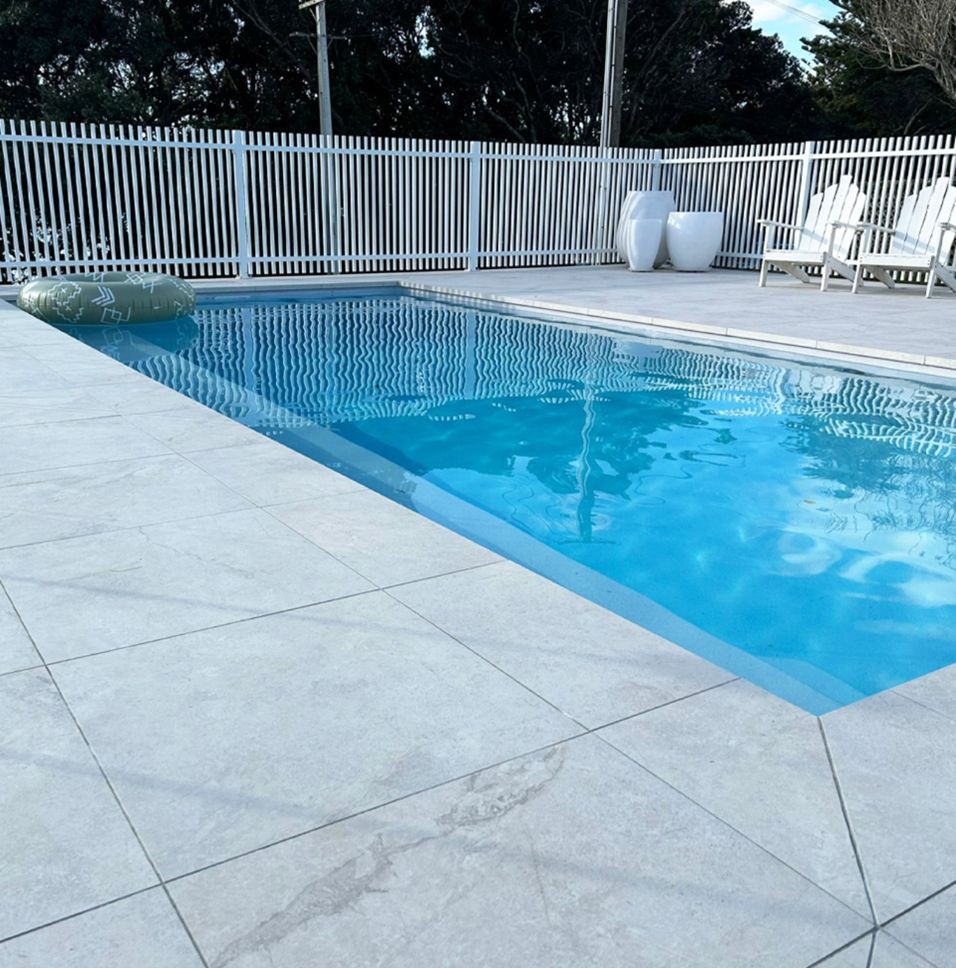
Outdoor tiles withstand the elements but still need care to stay vibrant:
- Hose down the area to wet the surface.
- Sweep or scrub with a strong-bristled broom.
- Use Aquamix Concentrated Stone & Tile Cleaner for mild grime.
- Hose off remaining dirt. For large areas, work in sections starting near the house and moving outward.
- For stubborn dirt build up, cement residue, rust and rust discolouration use Lithofin MN Builders Clean.
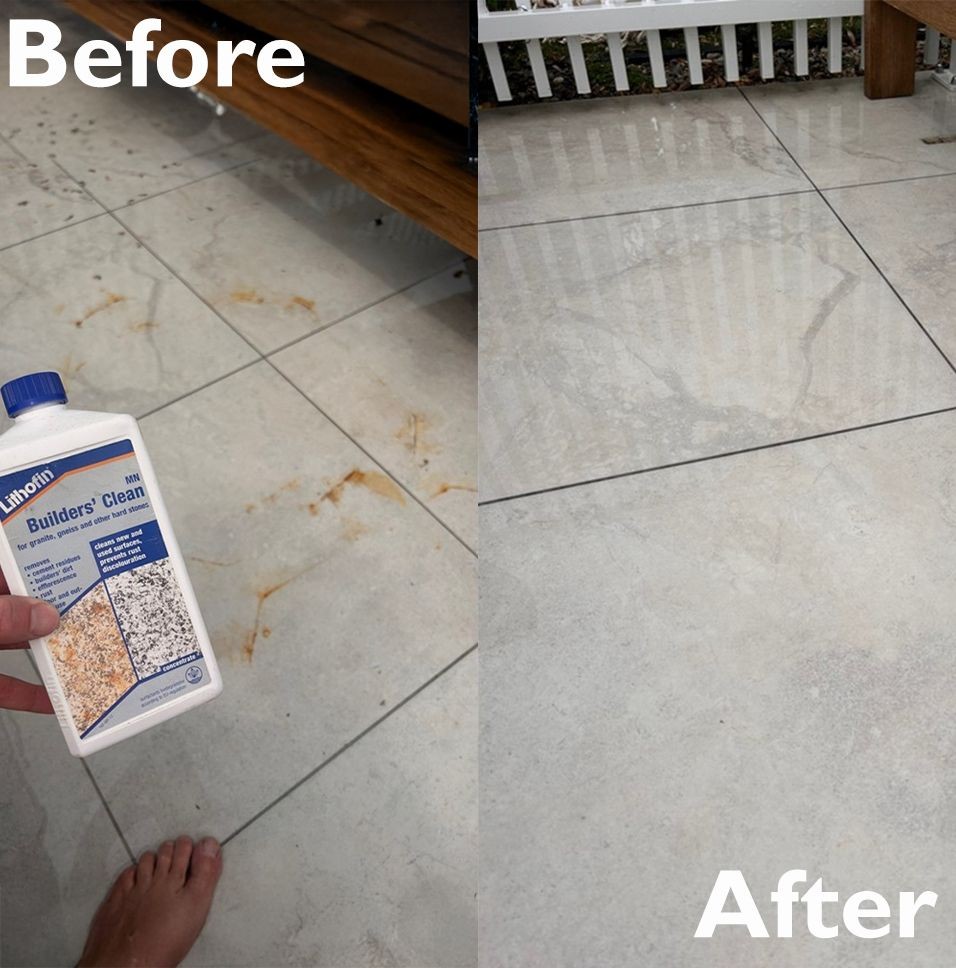
A before and after of rust marks left on white porcelain antislip tiles from a decaying old umbrella holder. A coarse scrubbing with Lithifin MN Builders clean removed most marks effortlessly.

Efflorescence
Efflorescence occurs when water-soluble salts within concrete, grout, adhesive, or the substrate beneath your tiles are carried to the surface by moisture movement. As the water evaporates, it leaves behind a white, powdery residue—this is the salt deposit you see.
It typically happens when:
- Moisture is present under or behind tiles (e.g. from rain, leaks, or poor drainage)
- There’s insufficient sealing or broken grout/movement joints
- The installation materials (like adhesives or screed) contain naturally occurring salts
Efflorescence is more common in outdoor or newly installed tiles and doesn’t usually indicate a defect, but ongoing moisture issues should be addressed to prevent it from recurring.
So what to do?
- Dry-brush and sweep or vacuum it away.
- Persistent issues may need a specialist efflorescence cleaner. Aquamix EFF-EX and Aquamix Sulfamic Acid Crystals can be effective.
Hard Water Staining
Hard water stains are caused by a build-up of minerals like calcium and magnesium found in water. Some areas of New Zealand have exceptionally hard water. When hard water evaporates from tile surfaces—especially in wet areas like showers, bathrooms, and kitchens—it leaves behind these mineral deposits, which appear as cloudy white marks - particularly noticeable on dark / black tiles.
Over time, if not cleaned regularly, these stains can become more stubborn and difficult to remove. They’re especially noticeable on darker tiles and can dull the appearance of polished or glossy surfaces.
- To prevent hard water stains:
- Wipe down wet surfaces regularly to stop water from drying in place
- Use a pH-neutral cleaner for routine cleaning
- For more stubborn build-up, a non-abrasive product like FILTA Wonder Sponge and a specialty cleaning agent like Lithofin KF Active Clean may be required. They can be very difficult to remove.

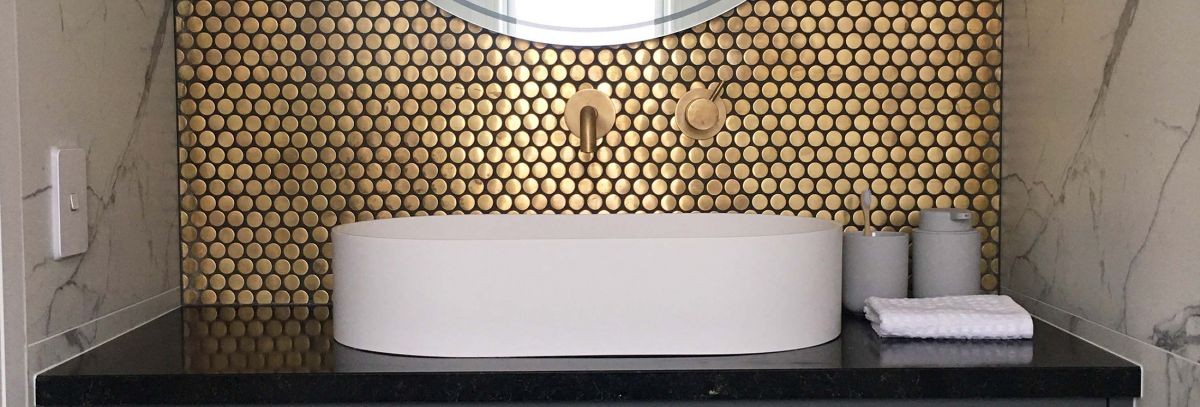
Cleaning Metallic Tiles & Glazes
Tiles are widely known for their durability and longevity. However, metallic finishes lack a protective glazed layer, making them more susceptible to damage. Harsh scourers, abrasive creams or powders, and strong chemical cleaners can easily harm these finishes. Fortunately, such products are generally unnecessary for cleaning tiles. Warm water with a few drops of a pH-neutral cleaner is usually sufficient. After cleaning, simply wipe the tiles with a soft cloth.
It's important to note that metallic tiles and glazes are sensitive to acidic substances. Avoid exposing them to citrus juices, citrus-based cleaners, or other acidic products. Metallic finishes are often used on tiles to create striking effects. While they add a touch of elegance, these soft metals are vulnerable to damage from abrasives and harsh cleaning agents, so handle them with care. Metals such as copper and brass will patina over time as they oxidise so should not be used in wet areas.
Helpful reminders:
- There is no need to use any soaps, detergents, powders, or chemical cleaners for regular cleaning. In fact, many of these can actually make it harder to keep your tiles clean, especially with prolonged use. If you do decide to use any of the above kinds of cleaners (such as for a more heavy-duty clean), it is important that you rinse thoroughly with clean water to completely remove the cleaner.
- Soaps (and many detergents that contain soap) can leave a thin film of ‘soap scum’ on the surface of your tiles if they aren’t completely rinsed. This layer of soap can ironically - trap dirt and grease and can build up over time to the point where your tiles actually appear to change colour.
- Many chemical cleaners are either acidic or alkaline (base) and, if not properly rinsed, can damage the surface of your tiles or later react with dirt and grease to cause other problems. If you require something a bit stronger for problem areas we generally recommend Aquamix Concentrated Stone and Aquamix Nanoscrub.
- Wet areas such as showers have slightly different cleaning needs as they are regularly subjected not just to moisture, but often to body oils, soaps, and higher amounts of dirt as well.
- A good all-purpose cleaner, a plastic scrubbing brush, and a little elbow grease will remove most regular build-up. Remember always to rinse thoroughly after use of cleaners. Again, cleaning once a week will generally be often enough.
- Bacteria and mould can sometimes grow in damp areas, particularly where it is also humid or there is little ventilation. Mould can be removed by spraying or wiping with Lithofin KF Mildew-Away Spray.
Aquamix and Lithofin products are available at your nearest Tile Depot outlet. Always read the manufacturer’s directions carefully.
Want to see our full range of Tile Cleaners?



